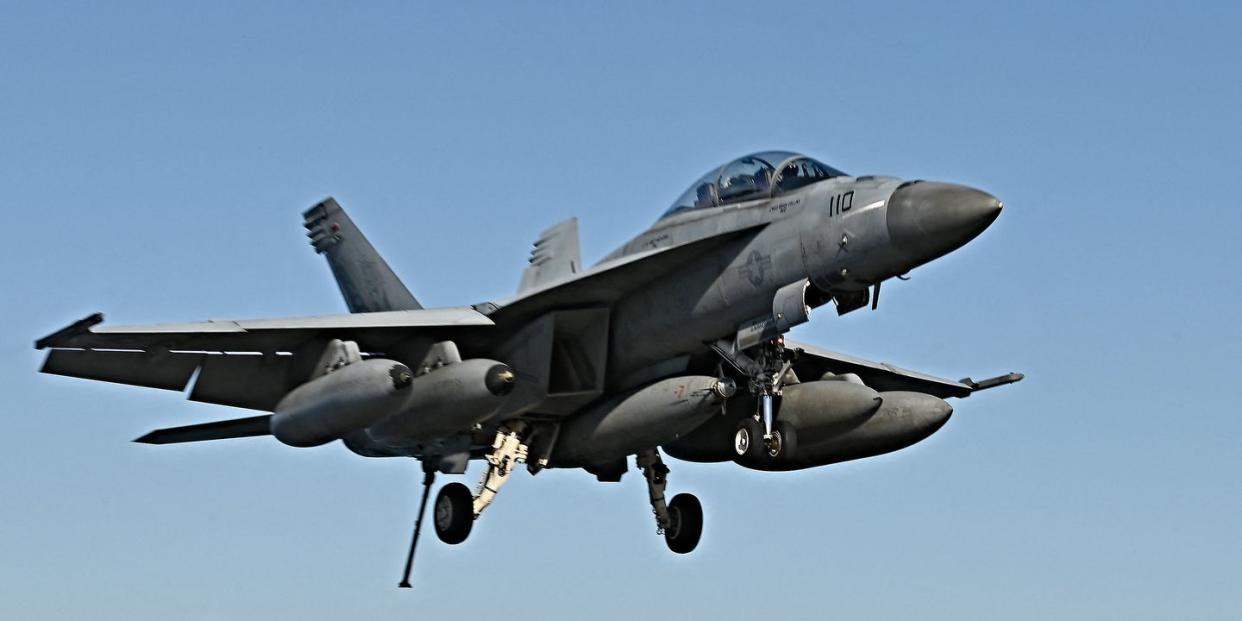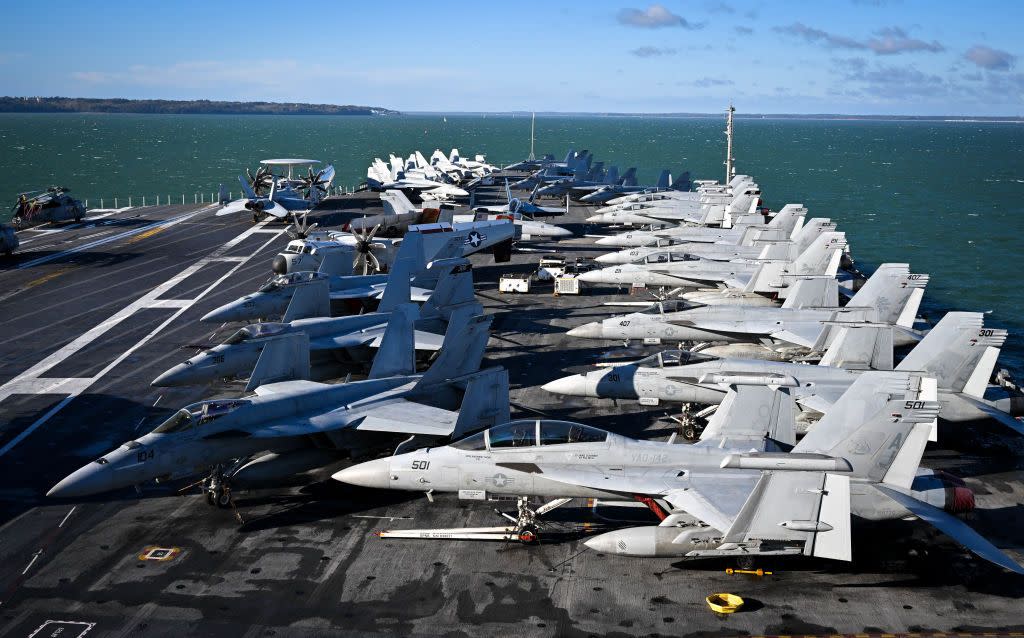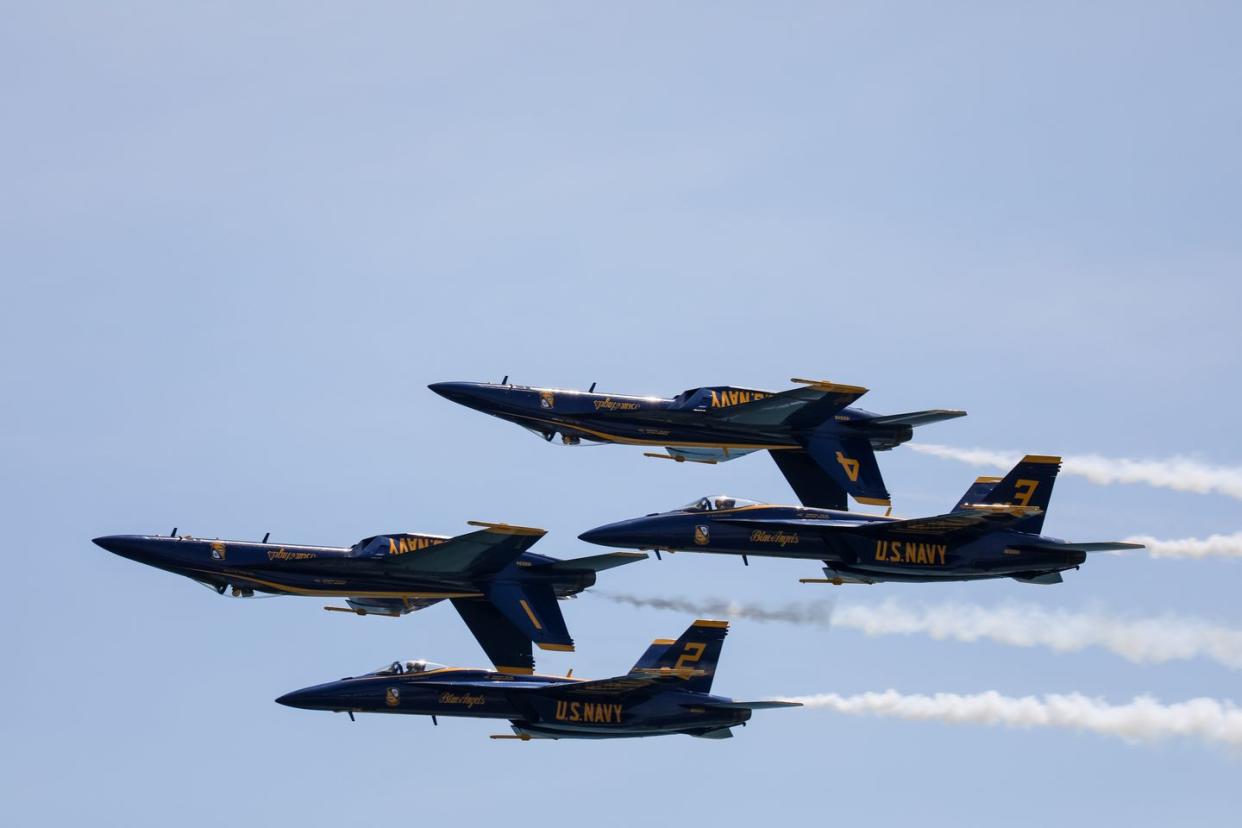The Super Hornet Is Going to Die

The Boeing F/A-18E/F Super Hornet strike fighter is going out of production in 2025, after 26 years.
The Super Hornet was designed as a bigger, beefier Hornet.
Super Hornets in service today will be replaced by the F-35 and the Navy’s upcoming sixth-generation fighter.
The Boeing F/A-18E/F Super Hornet strike fighter production line will shut down in two years. The Super Hornet, developed in the 1990s as a jumbo version of the original F/A-18C Hornet, is the U.S. Navy’s main fighter jet. Barring an order from India, Boeing will pivot manpower and resources to other projects in 2025.
Boeing, Defense News reports, will shutter Super Hornet production in 2025, as it builds a final eight jets for the Navy. The defense contractor said it could extend production an extra two years if India chooses the fighter for its new Vikrant-class aircraft carrier. India needs 26 new fighters for Vikrant, is competing against the French Rafale M.

The F/A-18E/F Super Hornet is basically a super-sized F/A-18C Hornet fighter. The Super Hornet weighs 7,000 pounds more and has a 50 percent greater range. The Super Hornet is also designed with a reduced radar signature, the most obvious redesign being the air intakes under the cockpit. Its primary missions are air-to-air and air-to-ground warfare, and with the addition of external refueling pods, refueling other aircraft in the carrier air wing. The -E version is a single seat jet while the -F version is a two-seat jet.
The Super Hornet was originally designed to replace the F-14 Tomcat fighter, and then gradually replaced the F/A-18C Hornet fighter jets. Today, it is the most common fighter on a U.S. Navy aircraft carrier flight deck. In many cases, it is the only fighter in a deployed air wing. As carriers enter maintenance periods in drydock, they are being upgraded to also fly the F-35C Lightning II. By 2030, all carriers should be flying a mix of two squadrons of F-35Cs and two squadrons of F/A-18E/Fs.

Beyond 2030, the Navy’s Next Generation Air Dominance (NGAD, not to be confused with the Air Force program of the same name) should begin replacing the remaining Super Hornets with a new sixth-generation fighter jet. NGAD will probably be another stealthy strike fighter, but paired with a robotic “loyal wingman” and with an emphasis on range, allowing it to fight at longer ranges to keep the aircraft carrier safe.
The Super Hornet is currently in service with the U.S. Navy, Royal Australian Air Force, and Kuwait Air Force. The Blue Angels flight demonstration team transitioned from Hornets to Super Hornets in 2020, so they will remain the “public face of the Navy” for decades to come.
You Might Also Like
